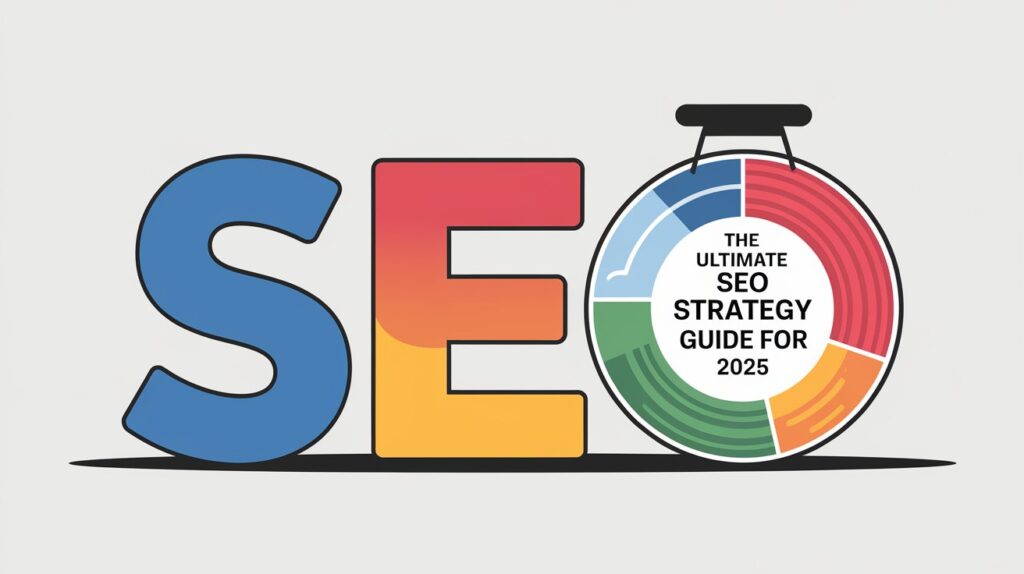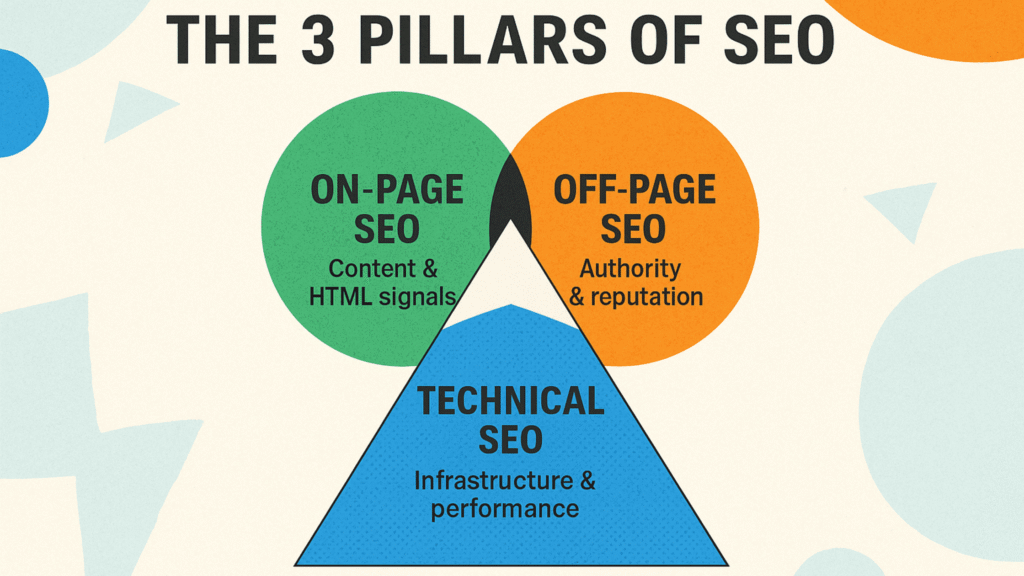From 0 to 50K Monthly Visitors in 6 Months: Our Proven SEO Strategy for 2025

Imagine turning a brand-new website into a traffic magnet—growing from zero to 50,000 monthly visitors in just six months. In the ever-evolving world of search, this isn’t magic. It’s the result of a disciplined, semantic SEO-driven strategy, laser-focused on search intent, keyword optimization, and content clusters.
If you’re a small business, ecommerce brand, local service provider, or SaaS startup, this guide is your blueprint. We’ll share our step-by-step approach, inject real-world insights from Backlinko, AIOSEO case studies, and Google Search Central, and answer the most searched SEO strategy questions. We’re also peppering in must-know SEO keywords, local SEO strategy, and Shopify SEO secrets.
Let’s cut through the complexity—SEO in 2025 is about connecting the dots between user needs and business goals. Ready to launch your own growth story? Let’s dive in.
- The 2025 SEO Landscape: What’s Changed
- Step 1: Define Your SEO Goals
- Step 2: Deep Keyword Research
- Step 3: On-Page & Technical SEO Foundations
- Step 4: Content Clusters & Semantic SEO
- Step 5: Link Building & Off-Page SEO
- Step 6: Leverage AI & Automation
- Step 7: Track, Analyze, Iterate
- Frequently Asked Questions (FAQ)
- Ready to Scale Your SEO in 2025?
The 2025 SEO Landscape: What’s Changed
- AI and generative search are reshaping SERP real estate, with Google SGE, Bard (Gemini), and ChatGPT-like interfaces now answering more queries without prompting a click.
- Search intent is more crucial than ever—Google rewards content that truly matches what people are asking, not just keyword density.
- Local SEO is booming, with 46% of searches now local.
- On-page SEO, technical SEO, and user experience are foundational, while backlink building and content authority remain powerful differentiators.
- Voice search, video SEO, and structured data are rising stars.
If you want to grow fast, you need a holistic, business-outcome-driven SEO strategy—not just a checklist.
Step 1: Define Your SEO Goals
What do you actually want to achieve?
More revenue? More leads? Brand awareness?
As Backlinko emphasizes, don’t chase rankings—chase real business outcomes. Here’s how to translate your goals into SEO actions:
| Business Type | SEO Focus Area | Content Priority | Success Metrics |
|---|---|---|---|
| Ecommerce | Product, money keywords | Product guides, reviews | Organic revenue, conversion rate |
| SaaS/Services | Bottom-funnel keywords | Case studies, demos, comparisons | Leads, cost per acquisition |
| Local Business | Local intent, reviews | Local guides, service pages | Store visits, local leads |
Action:
Map your business objectives to specific SEO activities. This alignment keeps your strategy focused and measurable.
Step 2: Deep Keyword Research
Keyword strategy is the engine of your SEO.
You need to target long-tail and short-head keywords, semantic variations, and question-based queries. Don’t guess—use tools like Semrush, Ahrefs, or a free SEO keyword search to discover what your audience actually searches for.
- Primary Keywords: SEO strategy, local SEO, seo agency, seo keywords, seo marketing near me, shopify seo, amazon seo, on page seo, seo backlinks, seo digital marketing, seo optimization companies, ecommerce seo, improve seo, google seo keywords, google my business seo, saas seo agency, seo content writing, link building seo, seo for small businesses, seo help for small business, off page seo, semrush content marketing, seo optimization service, seo business, best seo marketing company, ecommerce seo agency, ecommerce seo services, seo content, backlink building service, local seo strategy.
- Long-Tail & Semantic Variations:
- “How to improve seo for new website”
- “Best local seo strategy for small business 2025”
- “Shopify seo guide for beginners”
- “Link building seo campaign for ecommerce”
- “What does an seo strategist do?”
Action:
Create a keyword map, cluster topics, and plan content that answers real questions. Use Google Search Console and Google Keyword Planner to refine your targets.
Step 3: On-Page & Technical SEO Foundations

On-page SEO is non-negotiable:
- Title Tags: Under 60 characters, clear, and keyword-rich.
- Meta Descriptions: Up to 160 characters, engaging, and with your primary keyword.
- Headers: Use H1 for the title, H2 and H3 for subtopics—structure for readability and bots.
- URLs: Clean, descriptive, and optimized (e.g.,
/best-shopify-seo-tips-2025). - Image Alt Text: Concise, keyword-aware descriptions.
- Internal Linking: Connect related content to boost authority and keep users engaged.
- Mobile-First: Google indexes mobile versions first—ensure your site loads fast and looks great on all devices.
- Structured Data: Implement schema markup to stand out in rich results.
For ecommerce and Shopify SEO:
- Optimize category and product pages.
- Use logical store structure.
- Update content regularly.
- Write unique product descriptions.
- Optimize images and speed.
Step 4: Content Clusters & Semantic SEO
SEO in 2025 is about topical authority.
Don’t just write single articles—build content clusters around your core topics. For example, if you’re a local SEO agency, create clusters for “local seo for restaurants,” “local seo for dentists,” “Google My Business SEO,” and “local seo content writing.”
- Pillar Pages: Comprehensive guides on broad topics.
- Cluster Content: Supporting articles that dive deep into subtopics.
- Internal Links: Connect all cluster pages to the pillar and to each other.
Semantic SEO means sounding natural, matching search intent, and covering related concepts—not just repeating the same keyword.
Step 5: Link Building & Off-Page SEO
Backlinks are still a top ranking factor, but quality trumps quantity.
- Guest Blogging: Write for reputable industry sites.
- Skyscraper Technique: Find top-performing content, make it better, and pitch it for links.
- Broken Link Building: Find broken links in your niche and offer your content as a replacement.
- Local Citations: For local SEO, ensure your NAP (name, address, phone) is consistent across directories, Google Business Profile, and review sites.
- Link Building Services: Consider a backlink building service if you lack bandwidth.
Case Study Insight:
Edelweiss Bakery grew organic traffic 214% in four months by combining technical audits, content expansion, and a robust backlink strategy.
Step 6: Leverage AI & Automation
AI is transforming SEO—not just as a threat, but as a tool:
- Content Optimization: Use AI to suggest semantic keyword variations and improve readability.
- Rank Tracking: Automate monitoring of keyword positions and SERP features.
- Local SEO: AI-powered tools can scan local search grids and optimize for proximity.
- Content Clustering: AI can help map your topic clusters and suggest gaps.
Action:
Stay updated on AI SEO tools—they can save time and surface opportunities you might miss.
Step 7: Track, Analyze, Iterate
SEO isn’t set-and-forget.
You need real-time data to know what’s working:
- Google Analytics & Search Console: Monitor traffic, rankings, and search queries.
- Heatmaps & UX Tools: See how users interact with your site.
- Conversion Tracking: Tie SEO efforts to leads and sales.
- Monthly Reporting: Review keyword gains, traffic growth, and ROI.
Case Study Insight:
Avis ranked for 213 new keywords and drove hundreds of thousands of new leads with a data-driven, multi-location local SEO strategy.
Ready to grow your traffic from zero to 50,000—or more?
If you’re a small business, ecommerce brand, or aggressive marketer, our SEO agency can help you craft a custom SEO strategy for 2025. Book a free consultation or explore our blog for more tips on local SEO, Shopify SEO, on-page SEO, and link building.
Visit digehub.com or check out our latest SEO guides on our blog.
Frequently Asked Questions (FAQ)
Q: How long does it take to see results from a new SEO strategy?
A: Most campaigns start showing traction in 3–6 months, but significant growth—like reaching 50,000 monthly visitors—requires consistent effort, high-quality content, and ongoing optimization.
Q: Is SEO still worth it in 2025 with AI search taking over?
A: Absolutely. While AI changes how people find information, SEO remains critical for visibility, brand authority, and driving qualified traffic—especially for businesses targeting specific audiences.
Q: What’s the most important SEO factor for small businesses?
A: For local businesses, Google My Business optimization and local citations are crucial. For all small businesses, content quality, keyword targeting, and user experience matter most.
Q: How much does SEO cost for a small business?
A: Costs vary widely—DIY SEO is possible with free tools, while professional seo optimization services or seo agencies may charge monthly retainers. Focus on ROI: the right strategy pays for itself in new customers and revenue.
Q: Can I do SEO myself, or should I hire an agency?
A: Many businesses start with DIY SEO using guides like Google’s SEO Starter Guide, but as you scale, partnering with a best seo marketing company or seo agency can accelerate growth and ensure you’re using the latest tactics.
Q: How do I start an SEO strategy for a new website?
A: Begin with keyword research, set clear business goals, optimize on-page elements, create a content cluster plan, and start building high-quality backlinks.
Q: What’s the best local SEO strategy for 2025?
A: Focus on optimizing your Google Business Profile, ensuring NAP consistency, generating authentic reviews, creating localized content, and leveraging AI for local search grid analysis.
Q: How can I improve my Shopify SEO?
A: Use a mobile-friendly theme, optimize product and collection pages, write unique descriptions, improve site speed, and regularly update your blog with SEO content.
Q: What’s the difference between on-page and off-page SEO?
A: On-page SEO involves optimizing your website’s content and structure (titles, headers, images), while off-page SEO focuses on building authority through backlinks, citations, and social signals.
What’s the difference between on-page and off-page SEO?
A: On-page SEO involves optimizing your website’s content and structure (titles, headers, images), while off-page SEO focuses on building authority through backlinks, citations, and social signals.
Ready to Scale Your SEO in 2025?
Growing from 0 to 50,000 monthly visitors in six months is ambitious—but entirely possible with a proven SEO strategy, smart keyword targeting, relentless content creation, and data-driven optimization. Whether you’re focusing on local SEO, Shopify SEO, ecommerce SEO, or saas SEO, the principles are the same: understand your audience, deliver value, and measure everything.
Start today. Audit your site, map your keywords, and build your content clusters. And if you need a partner, our seo agency is here to help.
Visit digehub.com for more resources, or dive into our blog for actionable SEO tips.
Key Takeaways
- SEO strategy in 2025 requires clarity on business goals, deep keyword research, and a focus on user intent.
- On-page SEO, technical SEO, and content clusters are your foundation.
- Backlinks, local SEO, and Shopify SEO are powerful growth levers.
- Track, analyze, and iterate—SEO is a marathon, not a sprint.
- AI and automation can supercharge your efforts, but human insight is irreplaceable.
Now it’s your turn. Implement these steps, stay consistent, and watch your traffic—and business—grow.


